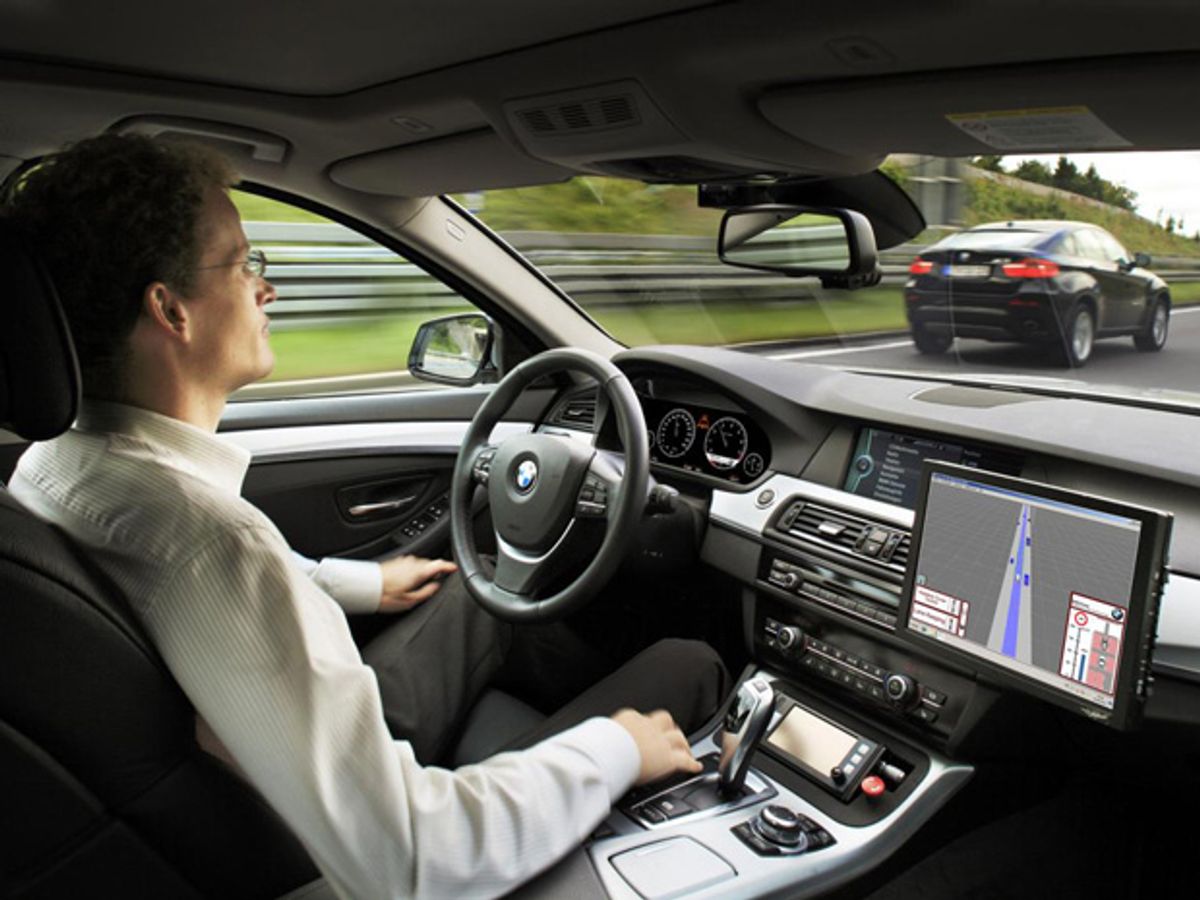Like an impatient teenager, self-driving car technology will be ready to hit the road well before authorities are ready to license it, predict a pair of studies released last week. That may not be such a bad thing, write researchers at RAND, a think tank in Santa Monica, Calif. Waiting until the technology's potential and impacts are more clear could help policymakers establish better rules for driverless roads, they write.
The other study, from business analysts IHS, echoes industry predictions that the first driver-supervised self-driving cars will sell by around 2020 and follows with other optimistic estimates including a prediction that 90 percent of cars in the US will be self-driving only by the year 2055. The IHS authors call slow government regulation and legal challenges more important barriers than software reliability or cybersecurity.
Still, the car industry will have to change its approach to software. The IHS report notes that today's cars often leave activated diagnostic access to the electronic control systems when shipping cars. That may make it easier for inspectors or mechanics to get into the car's electronic brains, but is also a basic security flaw. The IHS authors are blunt: "This is quite common today and must end."
The cost of sensors and processors for replacing human drivers are too high for mass production now, Bosch autonomous car chief Michael Fausten told IEEE Spectrum earlier this year at the Frankfurt Motor Show. But IHS predicts prices to drop to between US $7000 and $10000 per car by the time human-supervised self-driving cars hit the market around 2020. The technology will trickle down from luxury cars to standard cars a few years after that. By the time cars can forego human driver controls altogether, IHS predicts they will cost even less than those with duplicate controls.
But direct comparisons to human-driven cars are incomplete, if not unfair. As both reports note, self-driving cars will reach into markets that today's cars do not. For one thing, self-driving cars will serve people incapable of driving today, such as the young, the ill, the old, and yes, even the drunk. So the market for car transport will grow, even if the number of individual cars and drivers shrink: self-driving cars will be great for car-sharing and may put taxi, bus, and truck drivers out of their jobs.
Predicting the net impact of self-driving cars is difficult, the RAND authors hint. Even if self-driving cars turn out to be safer and more energy-efficient than human-driven cars, for example, it is too early to predict their net impact on traffic, warns the RAND team. Former drivers who can sleep or read through most of a commute will be willing to undertake longer commutes, contributing to sprawl and energy consumption. Other effects will extend into urban infrastructure: if people share self-driving cars they may need less parking spaces in urban centers. That's good for urban planners wanting to build dense cities but will undermine the steady revenues parking facilities provide cities.
Self-driving cars may end up costing society less than human-driven cars, but they will also change how society and individuals shoulder those costs, the RAND authors write. Policymakers may need time, and perhaps even local experiments, to understand the rippling effects self-driving cars will leave in their dust.
Photo: BMW
Lucas Laursen is a journalist covering global development by way of science and technology with special interest in energy and agriculture. He has lived in and reported from the United States, United Kingdom, Switzerland, and Mexico.



